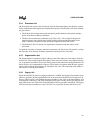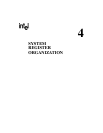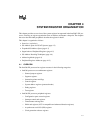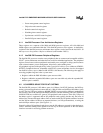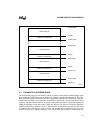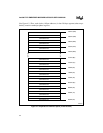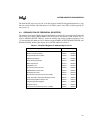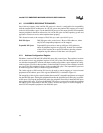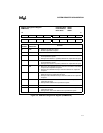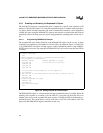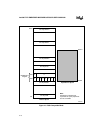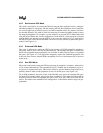
4-5
SYSTEM REGISTER ORGANIZATION
The Intel386 EX processor uses slot 15 for the registers needed for integrated peripherals. Using
this slot avoids conflicts with other devices in an EISA system, since EISA systems typically do
not use slot 15.
4.4 ORGANIZATION OF PERIPHERAL REGISTERS
The registers associated with the integrated peripherals are physically located in slot 15 of the I/O
space. There are sixteen 4 Kbyte address slots in I/O space. Slot 0 refers to 0H–0FFFH; slot 15
refers to 0F000H–0FFFFH. Table 4-1 shows the address map for the peripheral registers in slot
15. Note that the I/O addresses fall in address ranges 0F000H–0F0FFH, 0F400H–0F4FFH, and
0F800H–0F8FFH; utilizing the unique sets of 256 I/O addresses in Slot 15.
Table 4-1. Peripheral Register I/O Address Map in Slot 15
Register Description I/O Address Range
DMA Controller 1 0F000H – 0F01FH
Master Interrupt Controller 0F020H – 0F03FH
Programmable Interval Timer 0F040H – 0F05FH
DMA Page Registers 0F080H – 0F09FH
Slave Interrupt Controller 0F0A0H – 0F0BFH
Math Coprocessor 0F0F0H – 0F0FFH
Chip Select Unit 0F400H – 0F47FH
Synchronous Serial I/O Unit 0F480H – 0F49FH
DRAM Refresh Control Unit 0F4A0H – 0F4BFH
Watchdog Timer Unit 0F4C0H – 0F4CFH
Asynchronous Serial I/O Channel 0 (COM1) 0F4F8H – 0F4FFH
Clock Generation and Power Management Unit 0F800H – 0F80FH
External/Internal Bus Interface Unit 0F810H – 0F81FH
Chip Configuration Registers 0F820H – 0F83FH
Parallel I/O Ports 0F860H – 0F87FH
Asynchronous Serial I/O Channel 1 (COM2) 0F8F8H – 0F8FFH



